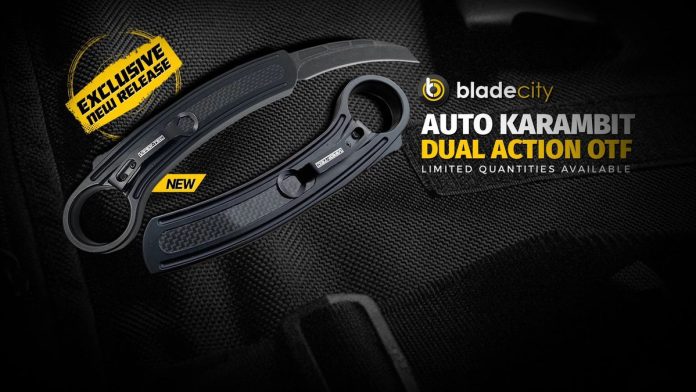[[{“value”:”
Thank you for reading this post, don't forget to follow and signup for notifications!
When it comes to out-the-front (OTF) automatic knives, Microtech sets the benchmark. Two of their most iconic models—the Ultratech and the Combat Troodon—are often compared side-by-side by collectors, operators, and everyday carriers alike. Both are masterpieces of engineering, but they serve slightly different purposes. Let’s break down the differences to help you decide which one fits your hand—and your lifestyle—best.
1. Size & Ergonomics
The first thing you’ll notice between the two is size.
Ultratech: The classic EDC size. With a blade length of around 3.4 inches and an overall length of 8.5 inches, it’s compact enough for daily carry but still offers plenty of cutting edge.
Combat Troodon: The big brother. Measuring about 9.5 inches overall with a 3.8-inch blade, it’s significantly larger and thicker in hand. The handle has a deeper contour and more aggressive jimping, giving it a secure, gloved-hand grip perfect for tactical or duty use.
If you prefer a slim, lightweight knife for pocket carry, the Ultratech wins. If you want a full-sized combat-ready OTF that feels substantial, the Combat Troodon dominates.
2. Blade Design & Performance
Both knives feature Microtech’s signature double-action mechanism—push forward to deploy, pull back to retract.
Ultratech blades often come in drop point, dagger, tanto, or bayonet configurations. It’s versatile and suited for slicing, piercing, and general-purpose tasks.
Combat Troodon blades are thicker and broader, offering better durability for heavy-duty use. Many variants include tanto or double-edge dagger profiles designed for maximum penetration and strength.
Blade steel options include Elmax, M390, or CTS-204P—all high-performance steels known for edge retention and corrosion resistance.
3. Action & Mechanism
Microtech’s dual-action OTF system is precise and reliable on both models.
The Ultratech has a slightly faster and snappier deployment due to its lighter internal spring assembly. The Combat Troodon, with its larger blade and beefier mechanism, feels heavier on the thumb—some users find that reassuring, others find it more demanding.
If you love a crisp, fast action with minimal thumb pressure, go Ultratech. If you like the firm, tank-like feel of a bigger spring and blade, go Combat Troodon.
4. Carry & Pocket Presence
The Ultratech practically disappears in your pocket. Its slimmer frame and lighter weight make it one of the most carry-friendly OTFs on the market.
The Combat Troodon, however, makes its presence known. It’s heavier, bulkier, and commands attention when clipped to your pocket. That said, it’s surprisingly well-balanced for its size.
Collectors often consider the Ultratech a gentleman’s OTF—while the Combat Troodon is a battlefield-ready beast.
5. Price & Collectibility
Both models sit in the premium range, typically between $300–$500, depending on configuration and finish.
Limited editions and signature series (like the Hellhound, Jedi Master, or Bounty Hunter) command higher prices and are highly sought after among enthusiasts.
If you’re building a collection, both are must-haves—but the Combat Troodon often stands out as the showpiece.
Final Verdict: Which One Should You Choose?
| Feature | Ultratech | Combat Troodon |
|---|---|---|
| Blade Length | ~3.4 in | ~3.8 in |
| Overall Length | 8.5 in | 9.5 in |
| Weight | ~3.5 oz | ~5.8 oz |
| Best For | Everyday Carry | Tactical / Heavy-Duty Use |
| Pocket Comfort | Slim & Discreet | Large & Substantial |
| Action | Fast & Light | Strong & Deliberate |
Choose the Ultratech if you want a sleek, fast-deploying OTF you can comfortably carry every day.
Choose the Combat Troodon if you want a larger, more commanding knife that feels unstoppable in your hand.
Either way, you’re buying one of the finest OTF knives ever made—Microtech’s engineering at its peak.
“}]]



